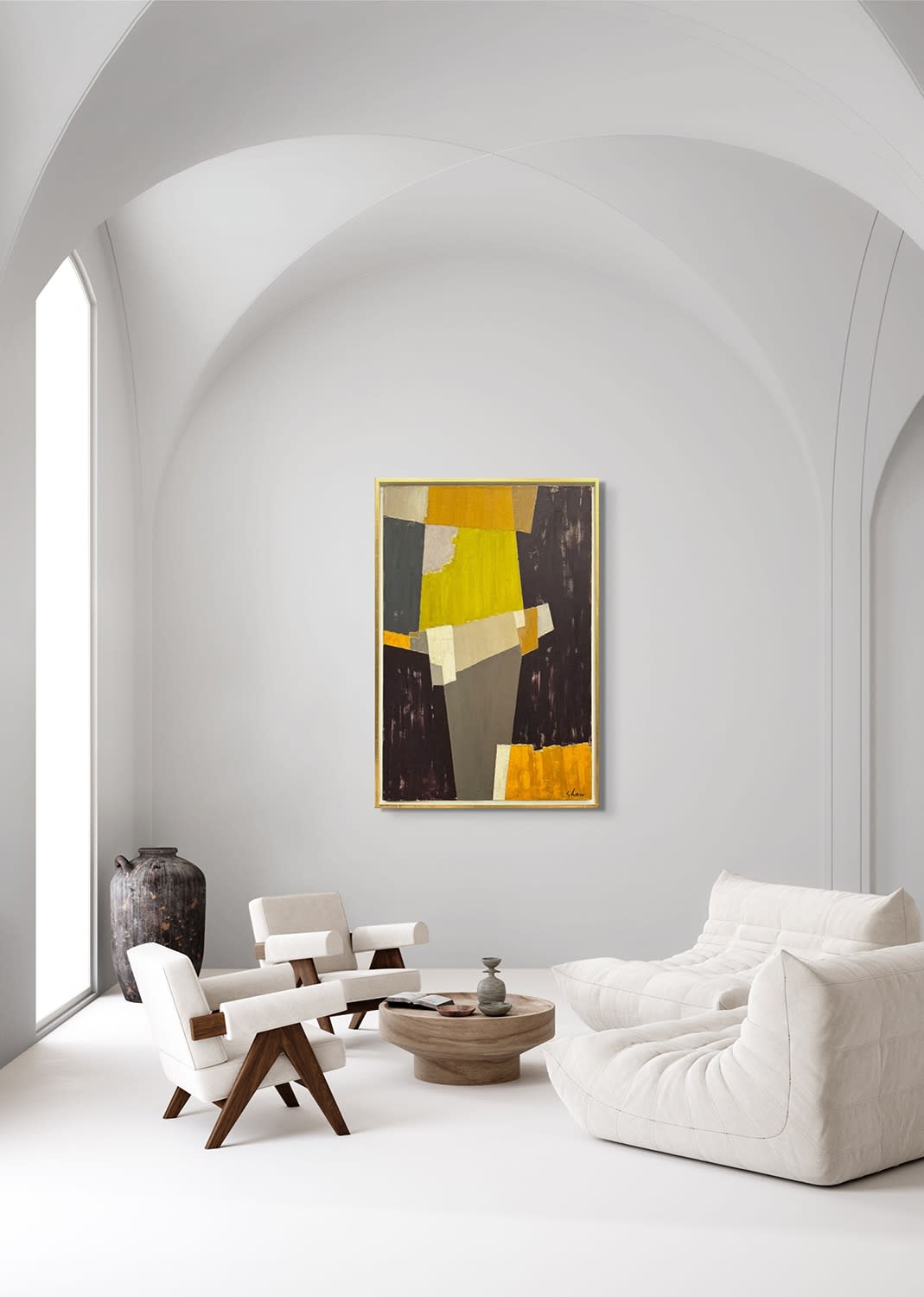









Framed: 52 1/2 x 35 1/4 inches
artist
Shaw was a well-educated man whose circle of friends included F. Scott Fitzgerald, Cole Porter and Albert E. Gallatin. A graduate of Yale University, Shaw studied architecture at Columbia, served briefly in World War I, and then worked for years as a free-lance writer. As an heir to the Woolworth fortune, his social status and financial security enabled him to travel widely, and exposed him to many of the artistic developments of the European avant-garde. At the age of 36, Shaw enrolled in the Art Students League and studied under Thomas Hart Benton and George Luks. Influenced by his interest in architecture, Shaw created a series of shaped canvases in the 1930’s that evoked the city’s modern skyline. These works were shown by Gallatin in 1935 at The Museum of Living Art, the first museum of modern art in the United States.
Shaw later became a founding member of the American Abstract Artists and served on the advisory board of the Museum of Modern Art in 1936 and 1941.
Description
Opus One is a compelling example of Shaw’s mature geometric abstraction. Painted in 1955, well into his exploration of non-objective art, the work reflects Shaw’s ongoing interest in “visual music”, a concept suggested by the title and echoed in the rhythmic interplay of form and color. At first glance, the composition appears rooted in hard-edge abstraction, with interlocking planes of ochre, charcoal, mustard yellow, cream, and warm grays arranged in a seemingly precise, architectural structure.
Yet on closer inspection, that sense of rigidity gives way to something more tactile and expressive. The brushwork is visible and varied, subtly interrupting the edges and lending the surface a rich, hand-wrought texture. Rather than masking the process, Shaw allows the viewer to see the construction of the painting, each shape is infused with a human presence that resists mechanical perfection. The result is a harmonious tension between structure and spontaneity, order and improvisation. This duality, between the crisp geometry of modernist design and the warmth of painterly touch, places Opus One among Shaw’s most resonant works from the postwar period.
provenance
Private Collection
Toomey & Co. Auctioneers, December 2018
Private Collection, CA
Los Angeles Modern, 2025









